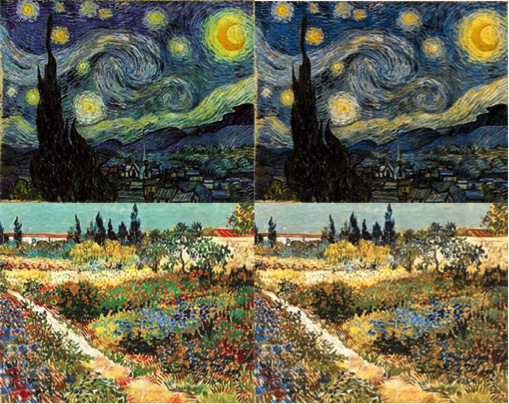“What color is this?” “Red.” “What color is this?” “Green.” “I thought you said you were red-green colorblind?!”
I’ve had this exchange of questions more times than I can count, which thanks to optometry school is at least up to ten. Yet I never knew what else to say to my friends whenever they would ask this question. Yes, I can see red and green – I’m not missing out when it’s Christmastime. But show me an Ishihara or HRR plate and I will never see that number or those shapes.
I am a mild protanomalous trichromat, and I’ve known about it for as long as I can remember. My maternal grandfather had the same condition, but only one of his three daughters passed the trait on to their sons. I don’t even have to test them to know that they don’t share the condition – one is a photographer, one is a state trooper, and the deficient one is checking out eyes for a living.
I never noticed any difficulties with the condition until I sat in large lecture halls at Notre Dame. As the professor would point to the projector slides with red laser pointers, I found myself having difficulties locating the laser. For over a year, I just took it as being due to the fact that the laser pointer was small and I liked to sit in the back of the hall. However, moving closer to the front never helped me locate the red dot. Then I began asking my friends if they could see it, and they thought I was kidding. Since I didn’t want to be subject to the round of “what color is this?” again, I just suffered through undergrad never seeing red laser pointers on the screens. Days that professors used green pointers made me happier than I care to admit.
 The only other time that I’ve felt hindered in the classroom is when professors use red font to highlight certain points on their slides. If the illumination for the slide is dim, the red on the slide looks black. This has led to a lot of fun moments in our ocular disease course when my professor would inform me every time he highlighted a certain point, which would be at least five times a class.
The only other time that I’ve felt hindered in the classroom is when professors use red font to highlight certain points on their slides. If the illumination for the slide is dim, the red on the slide looks black. This has led to a lot of fun moments in our ocular disease course when my professor would inform me every time he highlighted a certain point, which would be at least five times a class.
So what is it like with my condition in optometry school? Obviously I’ve had to memorize the HRR plates, but that wasn’t tough. My classmates dreaded having me for our final assessment first year because they would lose an additional 30 seconds to perform color vision. As for procedures, the only real difficulty I’ve had was determining whether a vessel was an artery or a vein while first learning direct ophthalmoscopy. While practicing for our first ever assessment (draw your partner’s retina in one hour), I would often times draw arteries as veins and vice versa. To compensate, I ended up using the red-free filter to make the veins that much bolder. It also made my partners happy because green is so much easier on the eye. Two years later, I no longer require the filter – but I will switch it on when performing slit lamp occasionally just to confirm suspicions.
Overall, I don’t feel hindered in the field (or in life) one bit. I definitely think that of all the color deficiencies, I’ve got it easy – I just have issues with some of the reds and it’s mainly in the lecture hall. Plus I’ve learned over the years to laugh at my experiences. For instance, a couple weeks ago my supervisor came into the exam room to ask why my BIO was on red-free. I didn’t even realize it, and was thoroughly enjoying the view of my patient’s peripheral retina. Whenever my classmates and I are on a vision screening, they always test my color vision and I fail. I’ve learned to pass the saturated D-15, but my Nagel Anomaloscope result is apparently a textbook example of my condition. And a classmate still enjoys reminding me that I mistook a shade of purple for pink on a tapestry. But it’s the little things like this that make me enjoy my condition that much more – it allows me to laugh at myself.
Also, whenever I see Van Gogh paintings, I don’t need a filter to see his actual views (according to some art scholars).
So if you ever have to tell parents that their kids are colorblind, here are my personal tips to help make the conversation easier.
1. Patients with color deficiencies will still function perfectly well. Maybe the occasional color slip-up, but that just makes things fun.
2. A lot of the job restrictions involving color deficiencies are being lifted. Color vision anomalies are becoming much more understood, and many jobs including engineers, firefighters, and police officers are re-looking at the outdated policies.
3. Most importantly, please please PLEASE don’t use the term red-green “colorblind.” Save the patient the agony of the awful question of “What color is this?” Explain the condition and educate the patient and parent!
